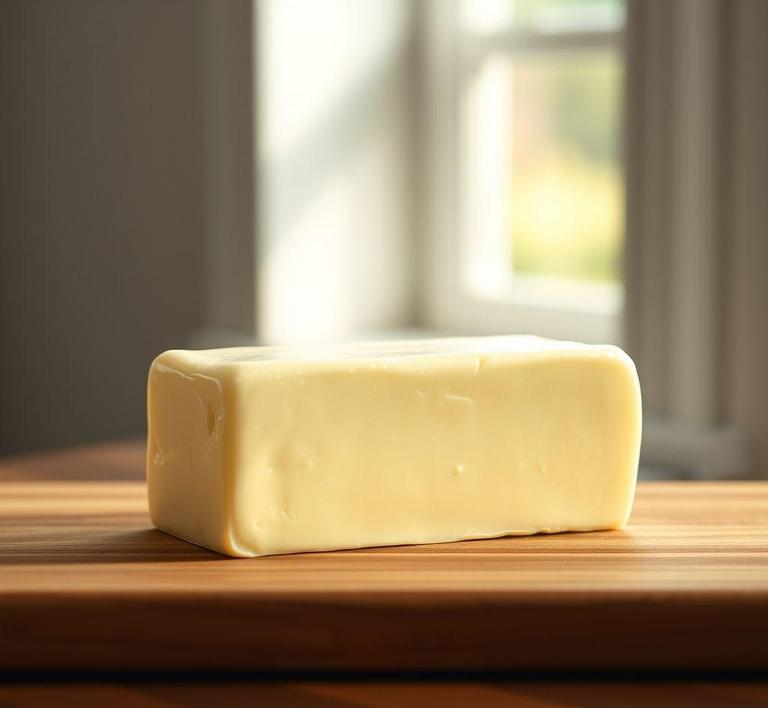Refreezing unsalted butter might seem a little tricky, but with the right techniques, it’s totally doable! Whether you’ve bought too much butter for your recipe or want to save some for later, learning how to refreeze it properly ensures it stays fresh and maintains its texture. Unlike salted butter, unsalted butter has a more delicate flavor, so it’s important to handle it carefully. In this guide, we’ll walk you through the best practices for refreezing unsalted butter, from how to store it to the ideal conditions for preserving its taste and quality.
Can You Refreeze Unsalted Butter?

Yes, you can refreeze unsalted butter-but with caveats. While it’s technically safe from a food safety standpoint, the key concerns lie in texture and flavor integrity. Butter is a high-fat dairy product, and unlike many water-based foods that suffer severe structural breakdown when frozen and thawed, butter is more resilient. However, unsalted butter, being more delicate and devoid of salt’s natural preservative qualities, is more vulnerable to quality degradation.
The primary consideration before refreezing is how the butter was handled during its thawed phase. If it was kept cold (below 40°F / 4°C), remained unopened, and was not out at room temperature for extended periods (no more than two hours), then it can be safely returned to the freezer. On the other hand, if it was left out or used in baking preparations, refreezing is not advisable.
How To Refreeze Unsalted Butter?
If you’ve determined your butter is still safe to refreeze, follow these steps carefully to preserve as much of its original quality as possible:
-
Assess the Butter’s Condition:
- Check for any changes in odor, texture, or color. Butter that smells sour, has developed a slimy texture, or looks discolored should not be refrozen or used.
- If the butter was partially used, discard any parts that were touched by utensils, fingers, or other ingredients. Contamination could compromise safety during storage.
-
Portion and Wrap:
- Divide the butter into smaller portions if you don’t plan to use a full stick at a time. This helps avoid future thaw-refreeze cycles.
- Wrap each portion tightly in plastic wrap or parchment paper to minimize air exposure, which leads to oxidation and freezer burn.
- Place the wrapped portions in an airtight freezer-safe bag or container. For extra protection, consider vacuum-sealing.
-
Label and Date:
- Always label the packaging with the current date. While butter can last up to six months in the freezer, it’s best used within three to four months after refreezing for optimal flavor and texture.
-
Freeze Promptly:
- Ensure your freezer is set to 0°F (-18°C) or lower. The faster the butter freezes, the better it retains its texture.
Quality Impact
Refreezing butter does not make it unsafe, but it can certainly affect quality. The main issue lies in the butter’s emulsion-an intricate balance of fat and water. When butter is frozen and thawed, this emulsion can begin to break down, especially in unsalted varieties, which lack salt to stabilize the fat and inhibit microbial growth.
Here’s how the quality may be impacted:
- Texture Changes: You may notice a slight graininess or separation once thawed again. This becomes especially noticeable when used for spreading. In baked goods, this change is often masked but can influence flakiness in pastries or tenderness in cakes.
- Flavor Deterioration: Unsalted butter has a fresh, clean taste that’s more sensitive to environmental changes. When refrozen, subtle flavor notes can degrade, and butter may begin to absorb odors from the freezer if not properly wrapped.
- Moisture Loss: Repeated freezing and thawing can cause a release of water from the butter matrix, especially if it was softened or partially melted. This excess moisture can lead to uneven mixing in recipes, especially those relying on precise fat-to-flour ratios.
Despite these potential drawbacks, many home bakers and cooks find the loss in quality to be minor-especially if the butter is being used in cooking rather than as a finishing ingredient (like a pat on top of toast or in whipped butter spreads).
Yes, you can refreeze unsalted butter, but only under the right conditions. Safety hinges on proper handling during thawing, while quality depends on how you refreeze it. While the flavor and texture may not be identical to fresh butter, careful wrapping, portioning, and minimal time spent thawed can help preserve its usability.
Use refrozen unsalted butter in baked goods, sautéing, or anywhere its slight textural compromise won’t be a star of the show. For gourmet recipes or applications where the butter is a defining element, fresh is always best. But for everyday culinary adventures, don’t let a defrosted stick go to waste-refreeze it with confidence and a bit of culinary care.
Is It Safe To Refreeze Unsalted Butter?
The short answer is yes-under the right conditions, it is safe to refreeze unsalted butter. However, this comes with some caveats that are crucial to understand in order to maintain both the safety and quality of the product.
Unsalted butter is made primarily of butterfat, water, and milk solids, with no added preservatives (like salt) to help it resist spoilage. This makes it slightly more vulnerable than salted butter to changes in texture, taste, and microbial growth when subjected to repeated freeze-thaw cycles.
If the butter was thawed in the refrigerator and has not been left out at room temperature for more than a couple of hours, it can be refrozen with minimal risk. However, if the butter was left on the counter for extended periods, especially in warm environments, harmful bacteria like Listeria or Staphylococcus aureus may begin to grow. Refreezing in that case would not kill the bacteria-it would merely put them into stasis, risking contamination once thawed again.
It’s also worth noting that although refreezing butter may not render it unsafe if handled properly, it can negatively affect the quality. Thawed and refrozen butter may lose some of its smooth, creamy texture and can become crumbly or grainy due to moisture separation and structural breakdown of the fat matrix.
Signs That Unsalted Butter Should Not Be Refrozen
Knowing what to look for is key. Here are some red flags that your unsalted butter is past the point of safe refreezing:
- Off Odors: Butter should smell clean and slightly sweet or creamy. Any sour, rancid, or ‘off’ aroma is a strong indicator of spoilage.
- Discoloration: Fresh unsalted butter typically has a pale yellow hue. If you see darkened patches, grey spots, or even mold growth, discard it immediately.
- Texture Changes: If the butter feels unusually slimy, sticky, or curdled, that’s a sign of microbial activity. Don’t refreeze.
- Taste Test (Optional and Safe Only if Refrigerated): A small nibble should taste rich and clean. A bitter or sour flavor is a sign that it’s gone bad.
- Sweating or Separation: If you see beads of moisture forming or notice the butter ‘weeping’ when cold, it may have started to break down, especially if previously thawed improperly.
Common Refreezing Mistakes
Even with the best intentions, people often make mistakes when handling butter for refreezing. Here are some common ones to avoid:
- Thawing at Room Temperature: Butter should always be thawed in the fridge to prevent bacterial growth. Room temperature thawing gives microbes an ideal environment.
- Repeated Thaw/Freeze Cycles: Each cycle deteriorates the butter’s structure and flavor. Try to thaw only what you need to use within a week.
- Refreezing Open or Contaminated Butter: Butter that’s been exposed to air, hands, or other foods can pick up bacteria and odors, making refreezing risky.
- Using Improper Storage Containers: Refreezing in flimsy wrapping or uncovered in the freezer can lead to freezer burn or absorption of off smells from nearby foods.
- Not Labeling Dates: Forgetting when the butter was last frozen or thawed is a recipe for confusion and potential food safety issues.
Tips And Tricks
If you often find yourself needing to refreeze butter, these techniques can help you do so effectively and with minimal quality loss:
- Freeze in Portions: Slice butter into tablespoon-sized pats or cubes before freezing. This way, you only thaw what you need.
- Double Wrap: Use wax paper or plastic wrap followed by a layer of aluminum foil or a zip-top freezer bag to keep air and moisture out.
- Vacuum Sealing: For long-term storage, vacuum sealing is ideal. It prevents oxidation and flavor absorption from other freezer items.
- Label Everything: Always write the date of freezing and any thawing info on the wrapper. Butter generally retains good quality in the freezer for up to six months.
- Use in Cooking or Baking: If you’re unsure of the quality after refreezing, use the butter for cooking or baking instead of as a spread. Heat helps neutralize minor texture changes or flavor imperfections.
Conclusion
Refreezing unsalted butter is possible, but it comes with specific responsibilities. Because unsalted butter lacks the natural preservative power of salt, it’s more sensitive to temperature abuse and contamination. As long as the butter has been properly handled-thawed in the refrigerator, not exposed to contaminants, and promptly refrozen in airtight packaging-refreezing poses little risk.
Still, quality may diminish with each cycle. So while the safety factor is manageable with care, the texture, taste, and usability of your butter may gradually suffer. For best results, plan ahead, portion wisely, and refreeze only when necessary.


